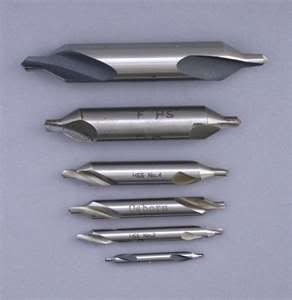Results 21 to 26 of 26
-
07-18-2011, 10:33 PM #21

Geezer: How is that "bench pin" used? Is it something that's supported underneath, or is it what it looks like: a piece of wood with a slot/hole in it? Thanks -Andrew
-
07-18-2011, 10:59 PM #22

Good question!
The pin has a cast iron clamp which clamps the wooden pin to the bench top. The wood is a sacrificial piece which is cut and shaped to deal with the normal work that is done on the bench. That pin has a tenon which goes under the anvil clamp and the bottom of the wood is tapered from the edge of the anvil/clamp upward to the front of the pin. There are other pins and holders which only attach to the front of a bench. I may drill a hole in the anvil portion of mine to allow a punched out pin to fall through the iron clamp. I have some jewelry experience and I like a very thin "V" slot to support small work while sawing. I often use the taper of the wooden pin to pry apart scales also. It makes a good work or hand rest while working on a blade also.
A generic side view photo:

Evil;bay has quite a few listed of the various types.
Respectfully
~RichardBe yourself; everyone else is already taken.
- Oscar Wilde
-
The Following 2 Users Say Thank You to Geezer For This Useful Post:
adbuett (07-19-2011), ScottGoodman (07-19-2011)
-
07-19-2011, 03:09 AM #23

Geezer, that's a very nice little tool! I can see where the slot would be very handy for supporting fine cutting. Thanks for the explanation!
-
07-21-2011, 07:34 AM #24

Jewellers' benches often have a semicircular cutout (as was probably falsely rumoured to be the case in the London Guildhall, where the aldermen were in the habit of dining extremely well), with a mortice in the middle to insert the bench pin. For using a metal piercing saw (a sort of fretsaw) on thin sheet, it is usually placed the other way up, so that the saw acts at a slight angle to the sheet. But if used purely for driving out pins, a flat piece of wood on the bench is just as good.
-
07-21-2011, 12:15 PM #25Senior Member

- Join Date
- Mar 2011
- Location
- Washington DC Metro Area
- Posts
- 468
Thanked: 114
What's the best non-destructive method for removing washerless pins?
-
07-21-2011, 04:02 PM #26

Many of those pins were set into a tapered hole. That means that the pin may be bulged out all the way to the washer next to the blade
I have yet to find a perfect method of removing them. I believe the only sure method would be to use a milling machine and a tiny end mill..not a drill bit. I have used the saw to cut through the blade at the pivot to save a pair of nice scales from a bad blade. I don't recommend it for any other way of saving high buck scales. The celluloid scales with the washerless pin were machine pressed into a ball at each end and sink deeply into the celluloid.
If a person were to set the scales into a plasticene modeling clay or a reusable reheat type urethane clay/ stable fix like the engravers use to fix the razor onto a board to use a drill press, it may be possible to use a center drill. It is necessary to have the axis of the pin exactly at the same axis as that of of the drill bit. If you do not make a center punch in the center of a pin a drill bit will often wander or cut out to the side of the pin. The center drills pictured do not wander but the chuck must be a good one:

Most small drill presses have a very poor chuck and the drill does not run concentric to the axis of rotation. So, with very brittle natural scales the drill may vibrate and break the scales. Don't ask!!
A dental burr will not cut straight ahead as would a drill bit. It must be used sideways to cut properly, and it will generate a good bit of heat.
I have used a dental burr in a high speed very small air powered handpiece from Harbor Freight. Steady hand and very little pressure sometimes works. PS, that little beasty takes a 2HP air compressor running steady!!! The much higher cost ones do a much better job of low air usage.

As mentioned back a ways, a Dremel with a little ball burr can also work.
So, as with so many things, I have aded to my bag of tricks as time passed and hope to add more possibilities as time passes. This is a valuable thread and I appreciate all who have posted here!
Thanks everybody!
Respectfully
~RichardLast edited by Geezer; 07-21-2011 at 09:44 PM. Reason: added thoughts
Be yourself; everyone else is already taken.
- Oscar Wilde


 10Likes
10Likes LinkBack URL
LinkBack URL About LinkBacks
About LinkBacks






 Reply With Quote
Reply With Quote



